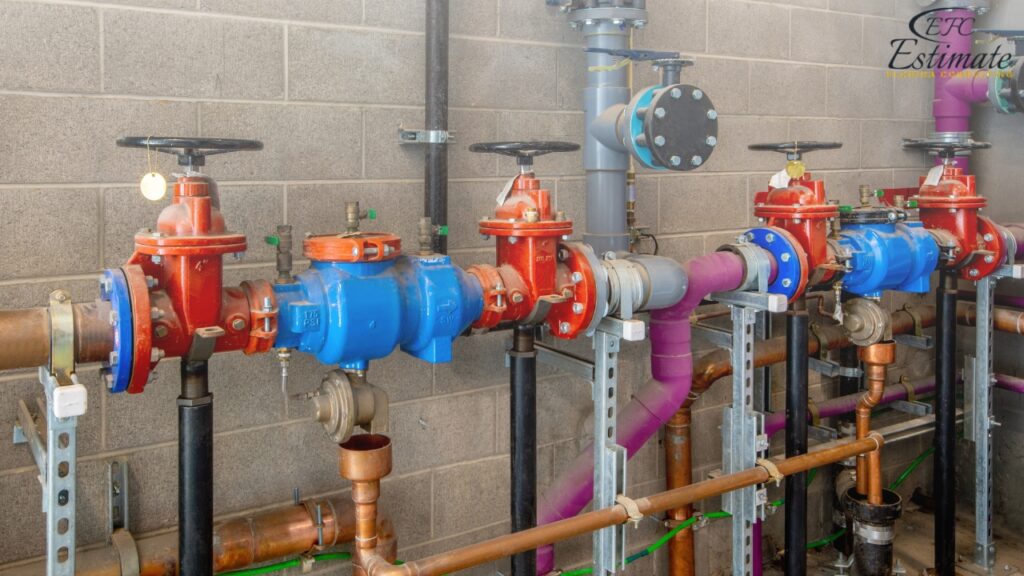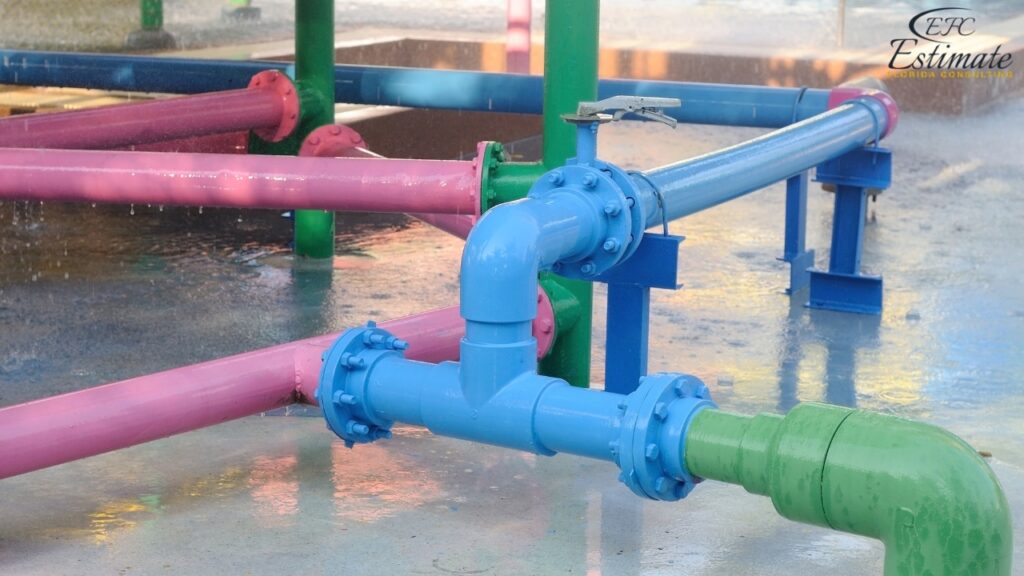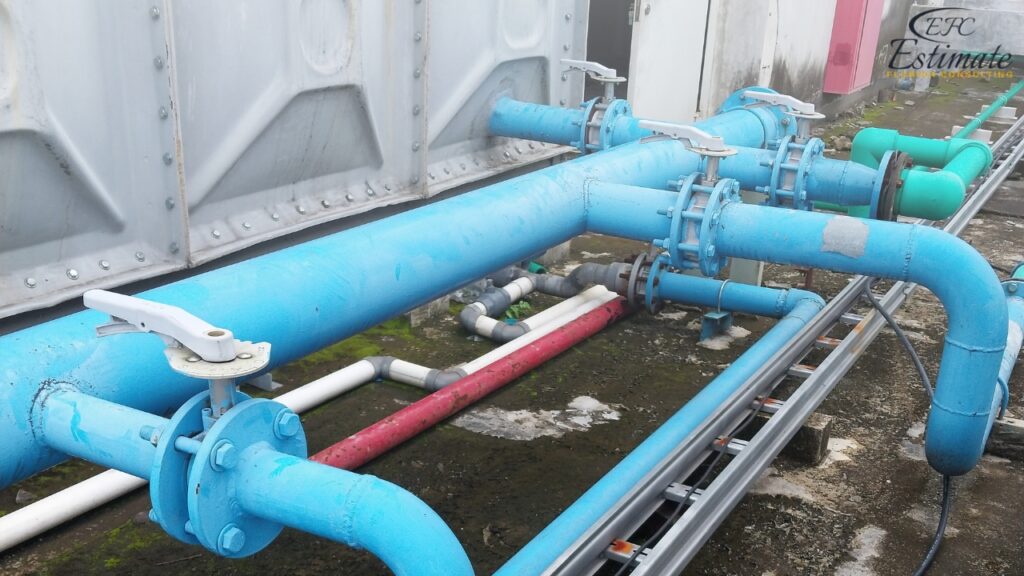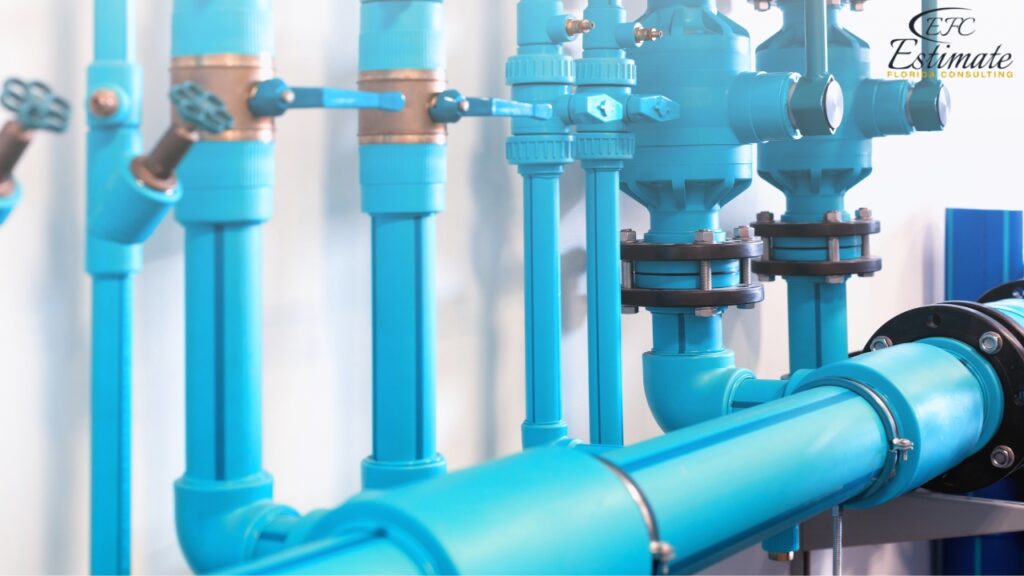How Much Does It Cost to Run a Water Line?
Running a water line typically costs between $3,835 and $13,520, averaging $50 to $150 per linear foot. This estimate includes materials, labor, trenching, and necessary permits. Costs vary depending on the distance, pipe material (copper, PEX, or PVC), local labor rates, and ground conditions. Additional expenses may arise if there are obstacles like tree roots, rocks, or existing infrastructure that need to be navigated or removed. Hiring professionals ensures a reliable and durable water supply, compliance with local regulations, and minimizes potential issues. Proper planning and budgeting will help ensure a smooth and successful installation.

Factors Influencing the Cost of Running a Water Line
Length of the Water Line
The length of the water line is one of the primary factors affecting the overall cost. Longer water lines require more materials and labor, increasing the total cost. Accurately measuring the distance between the water source and the endpoint is crucial for estimating costs. Additionally, the longer the water line, the more complex the installation can become, potentially requiring additional fittings and support structures.
Cost Breakdown by Length
Length of Water Line | Estimated Cost per Linear Foot | Total Cost for 100 Feet |
50 feet | $13 – $39 | $650 – $1,950 |
100 feet | $13 – $39 | $1,300 – $3,900 |
200 feet | $13 – $39 | $2,600 – $7,800 |
The cost per linear foot can vary based on the terrain, soil conditions, and other site-specific factors. For instance, running a water line through rocky or uneven terrain can be more labor-intensive and costly compared to flat, unobstructed ground.
Type of Pipe
The type of pipe used for the water line can significantly impact the cost. Common types of pipes include PVC, copper, and PEX, each with its own cost range and characteristics. The choice of pipe material can affect the durability, flexibility, and ease of installation. PVC pipes are generally less expensive and easier to work with, while copper pipes are more durable but costlier. PEX pipes offer flexibility and are resistant to scale and chlorine, making them a popular choice for residential installations.
Cost Breakdown by Pipe Type
Pipe Type | Estimated Cost per Linear Foot | Total Cost for 100 Feet |
PVC | $2.60 – $5.20 | $260 – $520 |
Copper | $13 – $26 | $1,300 – $2,600 |
PEX | $3.90 – $6.50 | $390 – $650 |
Choosing the right type of pipe depends on the specific requirements of the project, including water pressure, local building codes, and budget constraints. Additionally, considering the longevity and maintenance needs of each pipe type can influence the overall cost-effectiveness of the installation.
Labor Costs
Labor is a significant component of the overall cost of running a water line. Professional plumbers typically charge based on the complexity of the installation, the length of the line, and local labor rates. Hiring skilled professionals ensures the water line is installed correctly and meets all necessary standards. Experienced plumbers can also provide valuable advice on the best materials and methods for your specific project, potentially saving you money in the long run.

Cost Breakdown by Labor
Labor Task | Estimated Cost per Hour | Total Labor Hours for 100 Feet | Total Cost for 100 Feet |
Trenching | $65 – $130 | 10 – 15 | $650 – $1,950 |
Pipe Installation | $65 – $130 | 5 – 10 | $325 – $1,300 |
Connection and Testing | $65 – $130 | 2 – 4 | $130 – $520 |
Labor costs can vary based on the complexity of the project and the experience of the plumbers. In some cases, challenging installations may require specialized equipment or additional labor, which can increase costs. Ensuring that your contractor has a clear understanding of the project’s scope can help prevent unexpected labor expenses.
Site Preparation
Proper site preparation is crucial for installing a water line. This process can include clearing vegetation, digging trenches, and ensuring the site is accessible for installation. Site preparation costs can vary based on the existing terrain and the extent of work required. Preparing the site thoroughly can prevent future issues such as pipe damage and water leakage, ensuring a longer lifespan for the water line.
Cost Breakdown by Site Preparation
Preparation Task | Estimated Cost per Linear Foot | Total Cost for 100 Feet |
Clearing and Digging | $2.60 – $6.50 | $260 – $650 |
Trench Backfilling | $1.30 – $3.90 | $130 – $390 |
Erosion Control | $1.30 – $2.60 | $130 – $260 |
Investing in thorough site preparation can prevent future issues such as pipe damage and water leakage, ensuring a longer lifespan for the water line. Additionally, proper site preparation can make the installation process smoother and more efficient, potentially reducing overall labor costs.
Permits and Regulations
Depending on the location and scope of the project, obtaining permits and complying with local regulations may be necessary. This can involve additional costs and time but ensures the water line is installed legally and meets all safety standards. Understanding local building codes and permit requirements can help you avoid fines and legal issues.
Cost Breakdown by Permits and Compliance
Permit and Compliance Task | Estimated Cost | Total Cost |
Permits | $65 – $390 | $65 – $390 |
Inspection Fees | $130 – $260 | $130 – $260 |
Regulatory Compliance | $130 – $390 | $130 – $390 |
Ensuring compliance with regulations helps avoid legal issues and ensures the water line meets all safety and environmental standards. Working with a knowledgeable contractor who understands local regulations can streamline the permitting process and ensure that all necessary inspections are completed.
Get 5 New Leads Next 7Days With Our System
- Multi-Family Building
- Hotel Building
- Hospital Building
- Warehouse Building
- High-Rise Building
- Shopping Complex
Additional Components
Additional components such as valves, fittings, and insulation can add to the overall cost of running a water line. These components are essential for the proper functioning and longevity of the water line. High-quality valves and fittings can prevent leaks and ensure a reliable water supply, while insulation can protect the pipes from freezing in colder climates.
Cost Breakdown by Additional Components
Component | Estimated Cost per Unit | Total Cost for 100 Feet |
Valves | $13 – $39 | $130 – $390 |
Fittings | $6.50 – $26 | $65 – $260 |
Insulation | $1.30 – $2.60 per foot | $130 – $260 |
Choosing high-quality components can enhance the durability and reliability of the water line. Investing in good-quality valves and fittings can reduce maintenance needs and prevent costly repairs in the future.
Additional Considerations
Seasonal Timing
The time of year can impact the cost and ease of running a water line. Installing during dry, mild weather conditions can prevent delays and reduce complications related to soil conditions and weather-related disruptions. Planning your project during favorable weather can also make the work easier for contractors, potentially reducing labor costs.
Trenchless Technology

In some cases, using trenchless technology can reduce the cost and disruption of running a water line. This method involves installing the pipe without extensive trenching, minimizing damage to existing landscaping and infrastructure. While trenchless technology can be more expensive upfront, it can save money on site restoration and reduce the overall impact on your property.
Maintenance Costs
Regular maintenance is essential to ensure the water line remains in good condition. This can include periodic inspections, repairs, and replacements of components. Budgeting for ongoing maintenance helps extend the lifespan of the water line and prevents costly repairs. Setting aside a portion of your budget for maintenance can help you address issues promptly and keep your water line functioning smoothly.
Environmental Considerations
Choosing environmentally friendly materials and installation methods can reduce the environmental impact of running a water line. This includes using pipes made from recyclable materials and implementing erosion control measures to protect surrounding ecosystems. Environmentally friendly practices can also improve the sustainability of your project and enhance its long-term viability.
Financing Options
Financing the installation of a water line may involve exploring different financing options such as loans, grants, or partnerships. Understanding the terms and conditions of these options can help property owners secure the necessary funds. Different financing options may offer varying interest rates and repayment terms, so it’s important to compare your choices carefully.
Cost Breakdown by Financing Options
Financing Option | Estimated Interest Rate Range | Total Interest Cost (for $5,000 loan) |
Construction Loan | 4% – 8% | $200 – $400 |
Government Grant | Variable | Dependent on grant terms |
Public-Private Partnership | Variable | Dependent on agreement |
Exploring financing options can provide the necessary capital to complete the project without straining current financial resources. Securing favorable financing terms can make a significant difference in the overall affordability of your project.
Choosing the Right Contractor
Selecting a reliable and experienced contractor is crucial for the successful installation of a water line. Homeowners should research potential contractors, check references, and obtain multiple quotes to ensure they receive quality service at a fair price. A good contractor can also provide valuable guidance on the best materials and installation methods for your project.
Evaluating Contractor Quotes
When evaluating quotes from contractors, it’s essential to compare the scope of work, materials used, and warranties offered. The lowest quote isn’t always the best option, as it may exclude critical components or use inferior materials. Reviewing the details of each quote helps ensure you’re getting the best value for your investment. Asking contractors about their experience with similar projects can also help you assess their suitability for your job.
Checking Licenses and Insurance
Ensure that the contractor holds the necessary licenses and insurance to perform the work. Proper licensing indicates that the contractor meets local regulatory standards, while insurance protects homeowners from potential liabilities or damages during the project. Verifying these credentials can give you peace of mind and protect you from unexpected issues.
Project Timeline

Discussing the project timeline with the contractor is essential for planning and coordination. Understanding the expected duration of the installation helps homeowners schedule their activities accordingly and ensures that the project progresses smoothly. A clear timeline can also help you plan for any disruptions to your water service and ensure that the project stays on track.
Water Pressure and Flow Rate
Ensuring adequate water pressure and flow rate is crucial for the proper functioning of the water line. Homeowners should discuss these factors with their contractor to ensure the installed water line meets their needs. Properly sizing the water line and selecting the right materials can help maintain consistent water pressure and flow.
Backflow Prevention
Installing backflow prevention devices can protect the water supply from contamination. These devices prevent water from flowing backward into the main supply line, ensuring clean and safe water for all users. Backflow prevention is especially important in areas with varying water pressures or where contaminants could enter the water system.
Insulation and Freeze Protection
In colder climates, insulating the water line and providing freeze protection can prevent pipes from freezing and bursting. Discussing these options with your contractor can help ensure the water line remains functional year-round. Insulation and freeze protection measures can add to the initial cost but can save you money on repairs and replacements in the long run.
Download Template For Plumbing Project Breakdown
- Materials list updated to the zip code
- Fast delivery
- Data base of general contractors and sub-contractors
- Local estimators

Conclusion
Running a water line involves various costs, including the length of the line, type of pipe, labor, site preparation, permits, and additional components. By understanding and planning for these costs, property owners can create a realistic budget and ensure the successful completion of their water line project. Proper budgeting for all aspects of the project helps avoid financial surprises and ensures the water line is installed to high standards. With careful planning and attention to detail, property owners can achieve a functional and reliable water line that meets their needs and stands the test of time. Working with experienced professionals and considering all relevant factors can help ensure a smooth and cost-effective installation process.
FAQs
The cost to run a water line typically ranges from $3,835 to $13,520, averaging $50 to $150 per linear foot. This estimate includes materials, labor, trenching, and necessary permits.
Key factors include the length of the water line, type of pipe, labor costs, site preparation, permits and regulations, and additional components such as valves, fittings, and insulation.
Installing during dry, mild weather conditions can prevent delays and reduce complications related to soil conditions and weather-related disruptions. Planning your project during favorable weather can also make the work easier for contractors, potentially reducing labor costs.
Trenchless technology involves installing the pipe without extensive trenching, minimizing damage to existing landscaping and infrastructure. While it can be more expensive upfront, it can save money on site restoration and reduce the overall impact on your property.
- Regular maintenance ensures the longevity and performance of the water line:
- Regular Inspections: $220 – $430 for 100 feet
- Cleaning: $140 – $290 for 100 feet
Using environmentally friendly materials and installation methods can reduce the environmental impact. This includes using pipes made from recyclable materials and implementing erosion control measures to protect surrounding ecosystems.
Google Reviews



Process To Get Run a Water Line Estimate Report
Here I am going to share some steps to get run a water line estimate report.
-
You need to send your plan to us.
You can send us your plan on info@estimatorflorida.com
-
You receive a quote for your project.
Before starting your project, we send you a quote for your service. That quote will have detailed information about your project. Here you will get information about the size, difficulty, complexity and bid date when determining pricing.
-
Get Estimate Report
Our team will takeoff and estimate your project. When we deliver you’ll receive a PDF and an Excel file of your estimate. We can also offer construction lead generation services for the jobs you’d like to pursue further.

